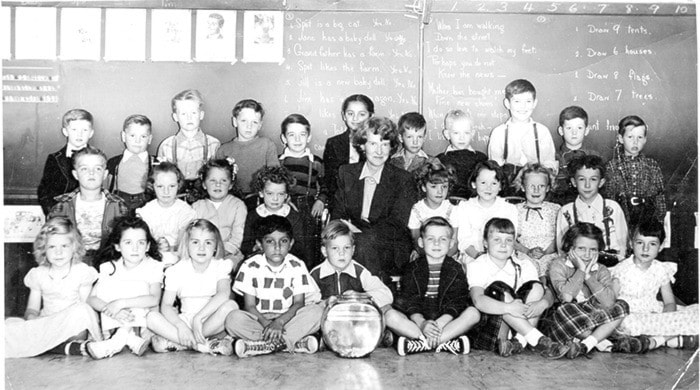Seems like a good time to write a column on local schools since here in the Lake Cowichan area we are going downhill fast (in terms of the declining number of schools remaining here).
Let’s start off with the few schools remaining here, then go on to the list of those [schools] no longer around (for one reason or another).
Last time I checked, Lake Cowichan Secondary School — now named Lake Cowichan School — was still operating, as is Palsson (or at least it was a day ago). That makes a total of two schools!
The high school was built in 1944 although much smaller than it is today. According to School District 66 – Schools of the Past by John Clark 1993, from that time forward, students have been able to “complete their full school program in their own district.”
That year, there were eight District 66 schools open including the Cowichan Lake Education Centre (CLEC). The list also included Honeymoon Bay School, Yount Elementary, A. B. Greenwell Primary, Palsson Primary, Stanley Gordon Intermediate, LCSS and the Clode Centre for continuing education.
In June 1983, J. H. Boyd Primary School, which later served as the local school board office, closed. After Hillcrest Lumber Mill closed down in 1968, the Mesachie Lake School was moved to the LCSS grounds where it became a band room then an art room. Mesachie Lake Elementary School operated from 1956 until the Hillcrest Lumber Mill closed around 1968.
Years earlier other rural schools were established in the outlying area of Lake Cowichan and operated for many years before being closed one by one.
Gordon River Elementary School which operated from 1950 until 1964.
Mayo Public School, built from materials provided by Mayo Lumber Company, served the community of Mayo from the 1920s. Over the years the school was enlarged for the many students that lived in the small community. By 1981, regular classes were no longer held at the school so the LCSS Alternate High School programme was held in the facility under the direction of district teacher Dick Sweet.
Other rural schools from days past included Nixon Creek School (1927-1949) later known as Caycuse Elementary School (1949-1989) which served the children of Camp 6/Caycuse.
Just a few miles away (at the head of the Lake) was another small rural school called Shaw Creek School (1937-1949), later known as Nitinat Elementary School (1949-1972). Situated at Nitinat Camp (Camp 3), the school and everything else that made this small camp the home and workplace of many loggers and their families is gone with barely a trace that it was once a thriving little logging community.
Apart from the above mentioned schools the first “real schools” (not makeshift classrooms) was located in the village of Lake Cowichan.
Prior to the construction of the high school (LCSS), classes were held in what later became casually known as the Bridge School, today the location of Evergreen Place apartments.
The Bridge School, which was demolished several decades ago, was used for all grades except Grade 12. A second building nearby, privately owned now for years, served as a primary school until Stanley Gordon School was opened.
How many schools, if any at all, will still be here in the not-to-distant future is anybody guess.
